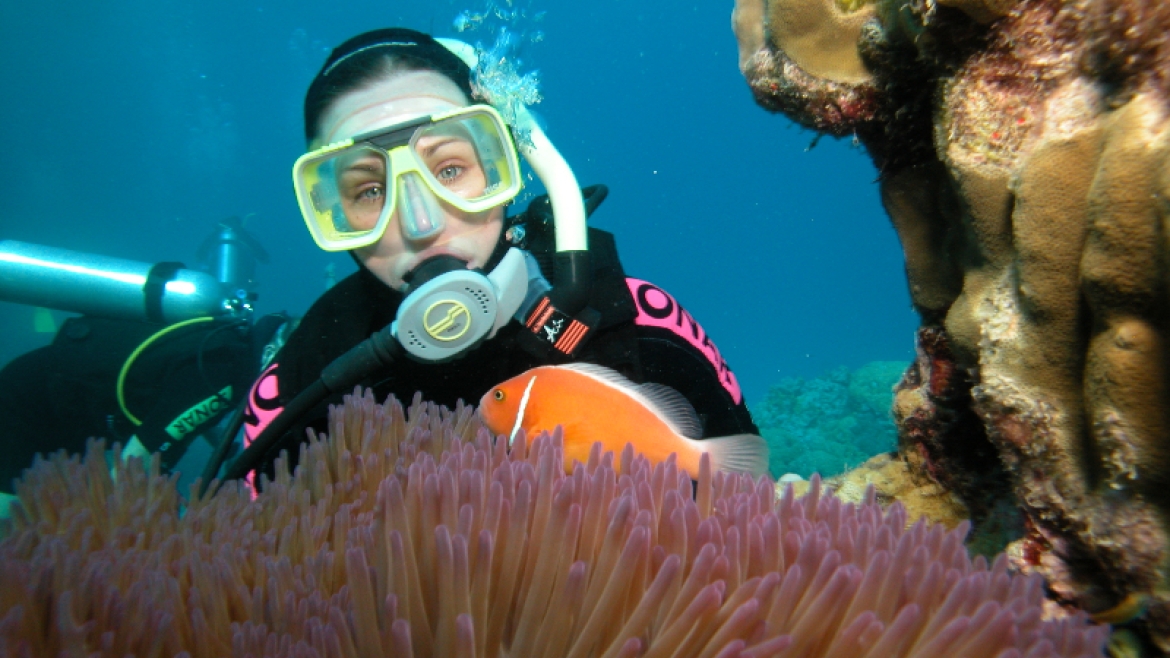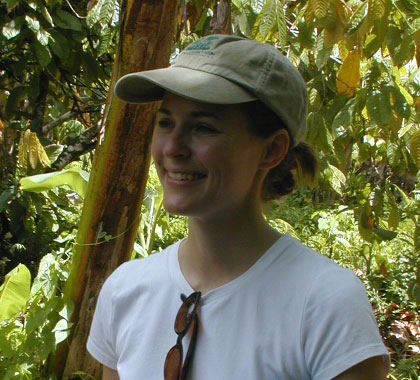Tucked away on the far western end of Haiti’s southern peninsula lies the remote Massif de la Hotte mountain range. It's where you’ll find the last stands of Haiti’s cloud forest.
In there live rare and beautiful creatures like the Hispaniolan giant tree frog, which looks like a large clump of moss with brimming eyes. The blunt-headed green tree snake also resides there. It’s pencil-thin, with enormous eyes and forms a silly grin when it’s agitated.
It’s also home to 13 amphibians found nowhere else and one of the last refuges of the Hispaniolan trogon, Haiti’s national bird.
Massif de la Hotte is what conservation biologists call a key biodiversity area.
They are the jewels of the Earth.
One Arizona State University researcher is working on creating a standard to identify areas that contribute significantly to global biodiversity.
Land and marine conservation is up since the 1970s, but animal extinction rates continue to rise. Scientists and government and conservation officials are discovering that slapping protection around areas doesn’t necessarily preserve what’s in them. Sometimes protected areas don’t necessarily contain significant biodiversity.
Urbanization, invasive species, hunting and pollution are all destroying the natural world — and it’s happening quickly.
“Biodiversity is being lost so rapidly across the globe,” said Penny Langhammer, adjunct professor in the School of Life SciencesThe School of Life Sciences is part of ASU's College of Liberal Arts and Sciences. and affiliated faculty with ASU’s Center for Biodiversity Outcomes.

ASU adjunct professor Penny Langhammer dives in the Great Barrier Reef off Australia, an area whose biodiversity is threatened.
Photo courtesy Penny Langhammer; top photo by James Colin/Freeimages.com
Langhammer is co-chair of an International Union for Conservation of Nature task force charged with creating a standard for identifying important biodiversity hot spots. The IUCN is the largest professional global conservation network, with almost 11,000 scientists volunteering. Most people know it from its Red List, which usually appears in the news as a headline that something is on the verge of extinction.
“Governments are realizing you can’t just protect an area and expect biodiversity to thrive,” Langhammer said. “We hope (a standard) will be used by national governments in conservation and the private sector in improving risk to biodiversity, to ensure really important sites from being destroyed.”
The standard is for identifying areas that can be managed that maintain globally important biodiversity.
Some non-profits have already identified important sites. Bird Life International has identified 12,000 such areas. The Alliance for Zero Extinction has identified 587 sites for 920 species of mammals, birds, amphibians, reptiles, conifers and corals.
“A lot of sites have already been identified,” Langhammer said. “We’re trying to fill in the blanks.”
The standard is in the final stages of being developed. It will have five criteria for identifying a key biodiversity area.
The five measures by which sites can be measured are: threatened biodiversity, geographically restricted biodiversity, ecological integrity, biological processes and irreplaceability through quantitative analysis.
If any of the criteria are met it qualifies the area as a key biodiversity area. There must be clear reasons why the site is important. Ecosystem health will help make sites more eligible for conservation.
“We can go in and tell why it’s (an) important (site),” Langhammer said.
Ideally a site will be globally outstanding.
“Much of the world will not meet this criterion (for ecological integrity),” said Langhammer (left, pictured in Samoa). “There won’t be very many of those sites identified because the planet has been so impacted.”
Sites void of biodiversity would include rubber plantations in southern peninsular Malaysia, which stretch for hundreds of miles, or genetically modified cornfields in the Midwest, where almost nothing else lives.
Sites rich in biodiversity include the Massif de la Hotte in Haiti or Queen Maud Gulf in northern Canada, where Ross’ geese nest more than anywhere else. The upper Gulf of California, home to fewer than 50 vaquita porpoises, which are threatened by gill-net fishing, and the Northern Sierra Madre National Park in the Philippines, which supports threatened and endangered species, are positive sites, according to Langhammer.
“Not all (key biodiversity areas) will or need to be protected areas,” Langhammer said. For example, General Davis Cave in West Virginia, which holds the only population of West Virginia spring salamanders, is already owned by the Nature Conservancy.
More Science and technology

ASU technical innovation enables more reliable and less expensive electricity
Growing demand for electricity is pushing the energy sector to innovate faster and deploy more resources to keep the lights on and costs low. Clean energy is being pursued with greater fervor,…

What do a spacecraft, a skeleton and an asteroid have in common? This ASU professor
NASA’s Lucy spacecraft will probe an asteroid as it flys by it on Sunday — one with a connection to the mission name.The asteroid is named Donaldjohanson, after Donald Johanson, who founded Arizona…

Hack like you 'meme' it
What do pepperoni pizza, cat memes and an online dojo have in common?It turns out, these are all essential elements of a great cybersecurity hacking competition.And experts at Arizona State…



